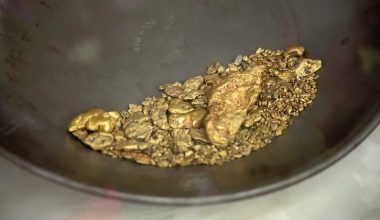Gold mining is an economic activity that has been practiced for centuries and has been a significant source of income for many communities worldwide. However, it’s also an industry criticized for its environmental and social impact.
In this context, it’s essential to highlight the best practices in gold mining and the lessons learned from past experiences.
This article will examine some examples of sustainable and responsible practices in gold mining, as well as the lessons we can learn from them to improve the industry in the future.
Transforming the Mining Industry: Strategies for More Sustainable and Responsible Exploitation
The mining industry is one of the most important for many economies worldwide, but it’s also one of the most criticized for its impact on the environment and local communities. That’s why strategies for more sustainable and responsible exploitation are increasingly being developed.
One of the primary strategies is the use of cleaner and more efficient technologies in mineral extraction and processing. For example, water recycling systems and renewable energy are being implemented in mining operations. Precision techniques for mineral exploration and extraction are also being developed, reducing the need for large mining areas.
Another strategy is a commitment to local communities and the protection of their rights. This includes prior consultation and informed consent before starting any mining project, as well as implementing sustainable development programs in the areas where mining occurs.
Transparency and accountability are also crucial. Mining companies must be clear about their practices and their impact on the environment and local communities. This includes publishing sustainability reports and collaborating with social and environmental organizations.
In summary, transforming the mining industry toward more sustainable and responsible exploitation is essential to minimize its negative impact on the environment and local communities. The strategies being implemented aim to balance the need for mineral resources with environmental protection and human rights.
However, there is still much work to be done, and the mining industry remains one of the most challenging in terms of sustainability. It’s necessary to continue working on the development of new technologies and strategies, as well as collaboration among companies, governments, and civil society to achieve more responsible and sustainable mineral resource exploitation.
Discover How Mining Influences Your Daily Activities
Mining is a key sector for the development of the global economy, as it’s responsible for extracting natural resources used in various products and industrial processes.
From construction materials to electronics, cosmetics, and medicines, all sectors depend to a greater or lesser extent on the minerals extracted from the earth.
For example, copper is essential for manufacturing electrical cables, while lithium is used in mobile device and electric vehicle batteries.
Additionally, mining also has a direct impact on the lives of people living in areas where extractions take place. In some cases, contamination of water, air, and soil can occur, which can have consequences for the health of the population.
On the other hand, there are also responsible mining initiatives aimed at minimizing the environmental and social impact of the activity. These initiatives promote the use of more efficient and sustainable technologies, as well as active participation of local communities in decision-making.
In conclusion, mining is a key sector for economic development, but it must also be approached responsibly and sustainably to ensure the well-being of people and the planet.
Step by Step: How Gold Is Extracted from the Earth
Gold is one of the most valued metals globally, and its extraction is an interesting and complex process. First, various techniques are used to find gold deposits in the earth, such as geological prospecting and drilling.
Once the location of gold is identified, the mineral extraction process begins. In some cases, open-pit mining is used, where the surface layer of the earth is removed to access the gold beneath it.
Another technique is underground mining, where tunnels and galleries are constructed to access gold deposits below the surface.
Once the mineral is extracted, a separation process is carried out to separate gold from other minerals and waste. This is achieved using techniques such as flotation, cyanidation, and amalgamation, among others.
Finally, gold is refined to remove any impurities and obtain a pure and high-quality final product. The end result is pure gold used in jewelry, electronics, and other applications.
In summary, gold extraction is a complex process that requires various techniques and processes to obtain a high-quality final product. Despite this complexity, the demand for this precious metal continues to grow worldwide.
Conclusion
In conclusion, gold mining can be a beneficial activity if conducted with best practices and by learning from past experiences. We hope to have provided valuable information and useful examples for those interested in this topic.
Always remember that environmental protection and the well-being of local communities should be a priority in any mining project. Let’s continue working together to achieve a sustainable future in the mining industry.
Until next time!

